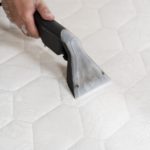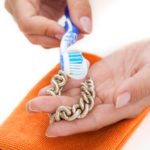Over time, silver naturally reacts with sulphur compounds in the air, causing it to become dull and discoloured. This process is known as tarnishing.
Luckily, there are multiple methods you can use to clean tarnished silver and restore its original shine.
Whether you’re dealing with items of jewellery, silver cutlery or a larger plate or tray, you’re in the right place.
Read on for step-by-step instructions on how to clean tarnished silver in several simple ways.
How to Use Bicarbonate of Soda to Clean Tarnished Silver
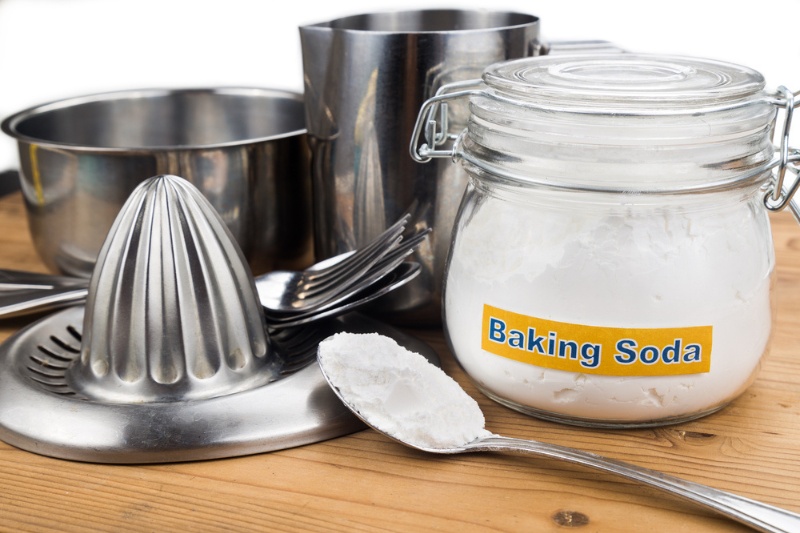
One common household product that is often recommended for removing light to moderate tarnishing is bicarbonate of soda (also known as baking soda).
This all-natural, mild abrasive can help break down the built-up chemical layer without damaging the delicate silver surface beneath.
There are a number of methods you can try depending on how badly the item is tarnished.
Whichever you choose, start by gently wiping down your silverware with a dry, lint-free cloth.
This will remove any dust and gritty debris prior to deep cleaning to help prevent scratching.
Method 1 – Aluminium foil, salt & bicarb submersion
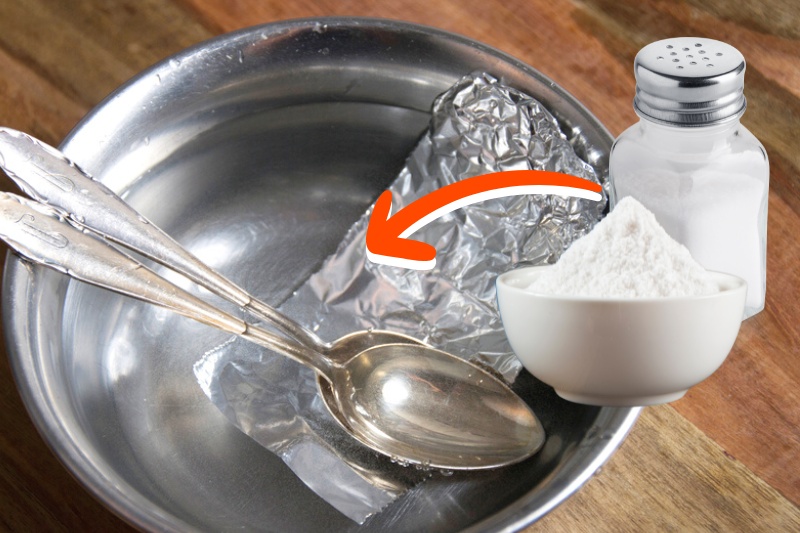
- Start by lining a large dish or roasting tin with aluminium foil, shiny side facing up.
- Next, fill the container with hot water and add 2 tablespoons of bicarbonate of soda, along with 2 tablespoons of table salt. Stir with a wooden spoon to dissolve.
- Then submerge the tarnished silverware in the solution, placing it directly on top of the aluminium foil. If you’re cleaning more than one item, such as a set of cutlery, make sure you leave gaps between each piece. Alternatively, you can wrap the individual items in their own piece of foil, with a spoonful of the mixture to cover them.
- Leave to soak for 10-15 minutes, then remove the items with tongs and place them onto some paper towel to cool. Then wipe off any remaining tarnish with paper towel or a clean cloth. Repeat as necessary until all of the dark tarnished spots are gone.
- Lastly, make sure the items are completely dry to prevent water spots and further tarnishing. Then buff the surface with a microfibre cloth for a gleaming finish.
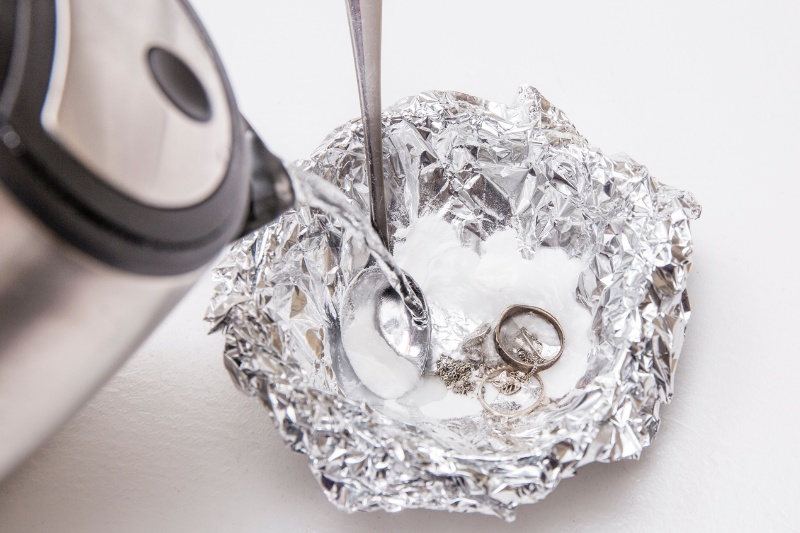
Wondering how it works? In short, tarnish is made up of silver sulphide and the aluminium works to pull the sulphur from the silver.
The salt and bicarb help speed up the transfer and add a mild grittiness to tackle tough layers. Watch the YouTube video below to see the results for yourself.
Tip: only use this method on solid silverware, as silver-plated items may peel if soaked.
Method 2 – Bicarb & water paste application for badly tarnished silver
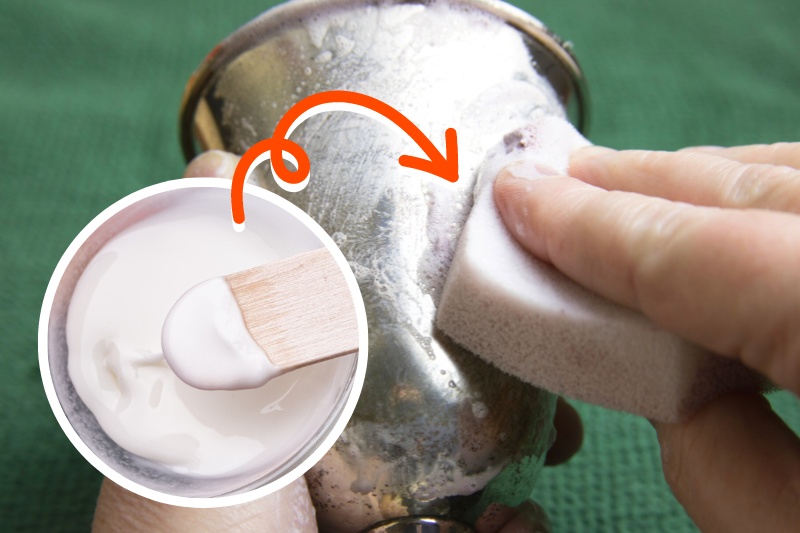
If the tarnish is particularly stubborn and still visible after trying the methods above, don’t worry. Instead, try applying a bicarbonate of soda paste directly to the item, as follows.
- Mix a small amount of bicarbonate of soda with some warm water to create a paste.
- Next, apply the paste to the tarnished silver using a damp cloth or sponge, and leave for 5-10 minutes.
- Then, gently rub the paste onto the surface using a back and forth motion, and continue to work it in until you start to see the tarnish fade away. If it is proving tough to remove, you can use a soft bristle toothbrush for extra scrubbing power.
- Once you’ve treated all the tarnished areas, rinse your silverware thoroughly with warm water to remove any leftover residue.
- Finally, dry the items off and polish as in Method 1 before you put them away.
Other Ways to Get Tarnish Off Silver Without Damaging It
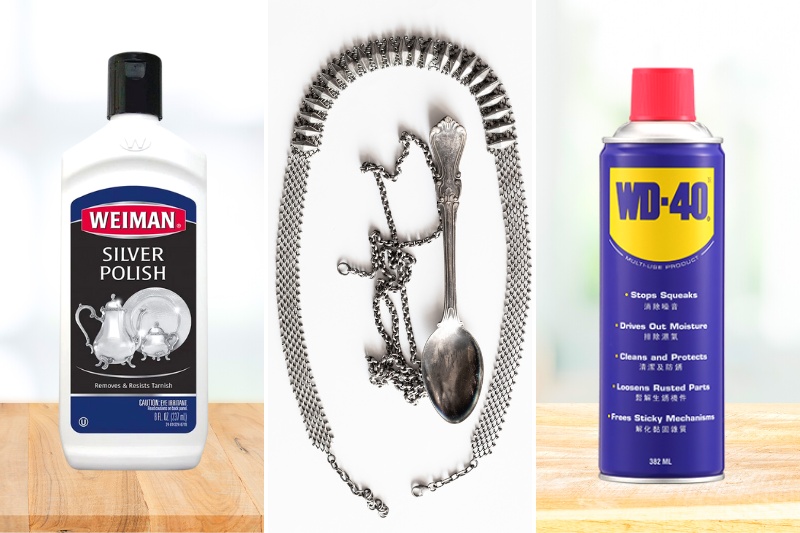
Alongside bicarbonate of soda, there are many products you can use to clean tarnished silver.
Cleaning silver cutlery regularly with washing up liquid helps to stop the chemical layer building up. Plus it can be used to lift off light tarnishing given its grime-fighting ingredients.
If washing up liquid doesn’t work, you can also buy specialist Silver Polish. This is ideal for delicate items like jewellery with embellishments that shouldn’t be submerged.
Or you could try another DIY approach – WD 40. This all-purpose lubricant contains oils that are designed to dissolve dirt on metal surfaces.
It then leaves a thin layer of protection against further tarnishing and rusting. Simply apply with the precision straw, rub in with a cloth and buff off.
Does ketchup clean silver?

Another option is tomato ketchup – yes, you read that right! Suitable for lightly tarnished items, ketchup, just like white vinegar and lemon juice, has acidic cleaning properties.
Apply a small amount to a cloth, apply to the tarnished spots and leave for 15-20 minutes.
After that, rub the residue away with a clean cloth, rinse and dry thoroughly. To double check that all the tarnish has been removed, hold the item against a white backdrop for better visibility.
Does toothpaste clean silver?
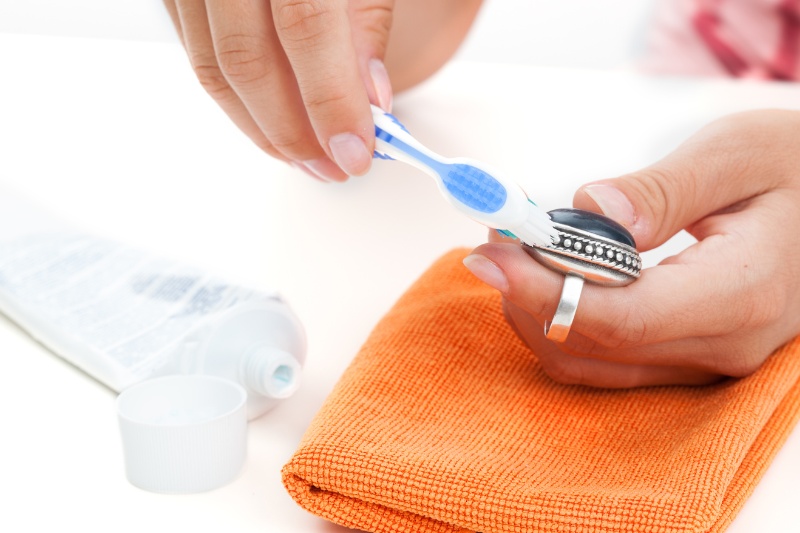
Alternatively, white toothpaste can be used in place of bicarbonate of soda if you haven’t got any to hand.
You want the formula to be thick, colourless and mildly gritty. Avoid anything with harsh whitening crystals, as these could scratch the silver. Smooth gels, on the other hand, will be too gentle.
Instead, choose a toothpaste containing mildly abrasive hydrated silica like Colgate Total Original. Then apply just like the paste – see steps in Method 2.
Whatever method you opt for, we’d suggest testing the product on a small, discreet area of your silverware first. Especially if you’re not sure whether the item is solid silver or plated.
If the item you’re looking to clean is particularly valuable, sentimental or an antique, it’s best to speak to a jeweller for advice.
Want to slow down the tarnishing process in future? Keep silver items away from moisture and store them out of direct sunlight.
For jewellery, that means removing it when washing up, showering or swimming, then storing in a suitable box or bag when not in use.
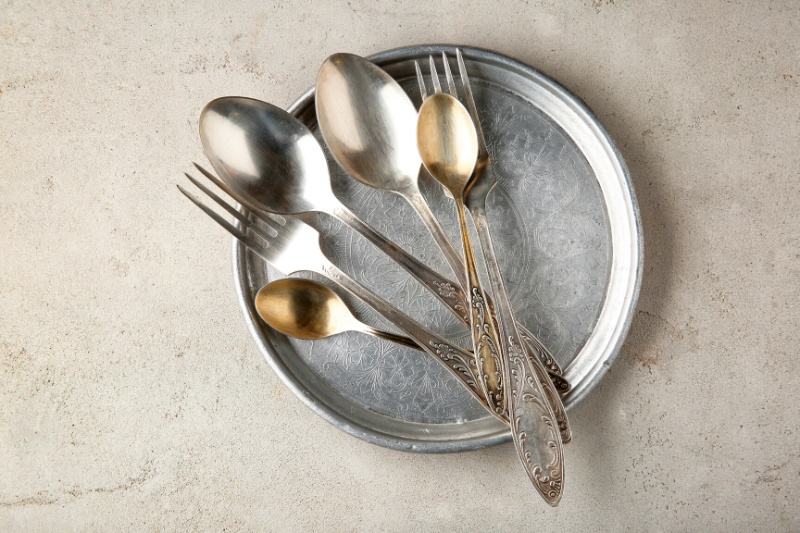
For cutlery and plates, it’s actually good to use and clean them more often, rather than only bringing them out on special occasions.
This way, the tarnish won’t have as much time to build up between washes. But make sure you wash and dry them by hand, instead of using the dishwasher. You should also polish your silver items twice a year to maintain the shine.
And that’s how to clean tarnished silver and keep it looking great for longer! Browse more cleaning tips, from how to remove laundry stains with lemon to handy toothpaste cleaning hacks.

A proud Yorkshire lass with a love for movies, music and cosy nights in! Once a self-confessed avoider of cleaning, she’s always on the lookout for new ways to make household chores as quick and simple as possible.


